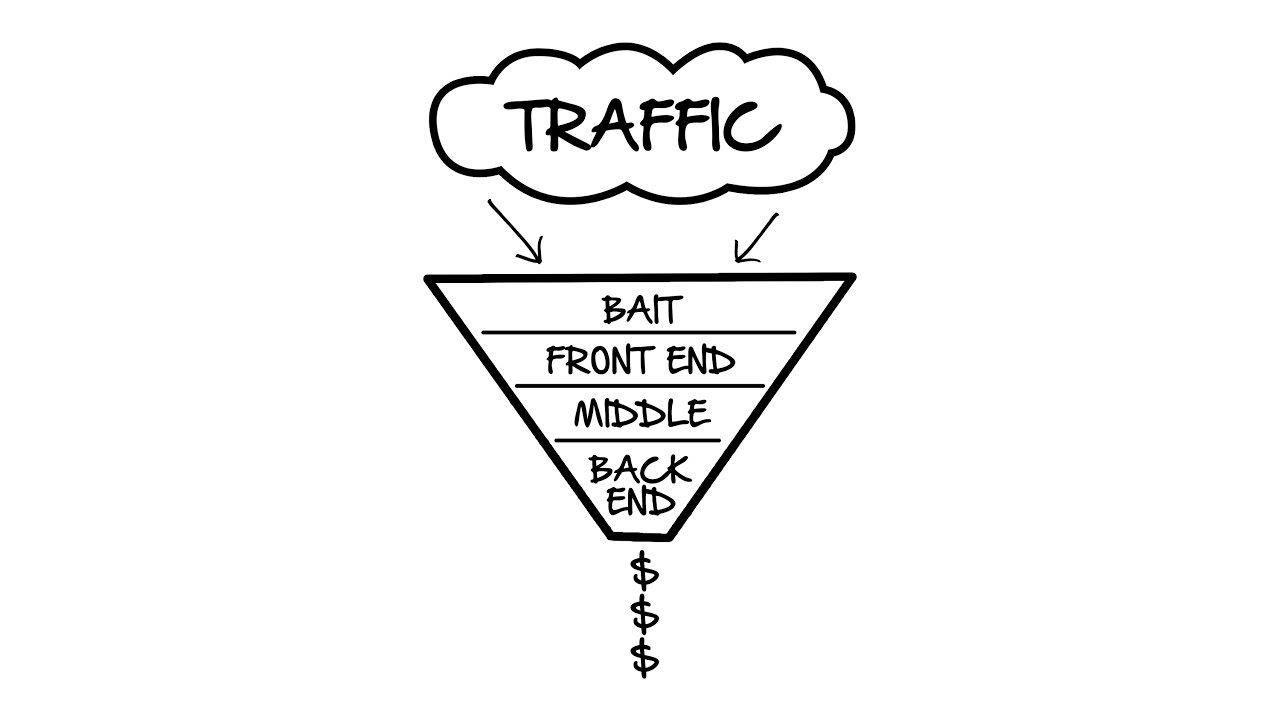The world of marketing is constantly evolving. While the Value Ladder has been a powerful tool for structuring customer acquisition, the concept is undergoing a transformation. Enter the Sales Funnel, a more dynamic framework designed to optimize the customer journey and maximize conversions.
The Shift from Ladder to Funnel
The Value Ladder, with its distinct rungs, presents a linear customer acquisition process. The Funnel, however, acknowledges the non-linear nature of the buying journey. Here’s why the Funnel is gaining traction:
- Multiple Entry Points: Customers can enter the funnel at various stages, not just the bottom rung of the ladder.
- Nurturing Leads: The Funnel emphasizes nurturing potential customers with valuable content and building relationships before the sale.
- Data-Driven Optimization: Funnels allow for tracking customer behavior at each stage, enabling data-driven optimization for higher conversions.
The Stages of the Sales Funnel
A typical Sales Funnel consists of these core stages:
- Awareness: This is where potential customers become aware of your brand and its offerings.
- Interest: Here, you pique their interest by addressing their pain points and showcasing the value you provide.
- Consideration: Customers compare your solution to competitors and evaluate its suitability for their needs.
- Decision: This is the point of purchase, where you nudge them towards choosing your product or service.
- Retention: The journey doesn’t end after the sale. Focus on fostering loyalty and encouraging repeat business.
The Power of the “Bait”
Marketing guru Dan Kennedy famously stated, “Ultimately, the business that can spend the most to acquire a customer wins.” While this quote might seem extreme, it highlights the importance of attracting high-value customers. Here’s where the concept of “bait” comes in:
- High-Value Content: Offer valuable content like e-books, webinars, or free consultations to attract potential customers at the top of the funnel (awareness stage). Companies like HubSpot excel at this, offering free marketing resources and tools to attract website visitors.
- Lead Magnets: Incentivize website visitors to provide their contact information by offering valuable downloadable resources like templates or white papers. For instance, a financial planning company might offer a free “retirement planning checklist” as a lead magnet.
Real-World Examples of the Sales Funnel in Action
- E-commerce Businesses: Imagine an online clothing store. They might use social media ads (awareness) to attract potential customers, then offer discount codes (interest) for their first purchase. They might showcase customer reviews (consideration) and offer free shipping (decision) to nudge the purchase. Finally, they might send personalized email campaigns (retention) with new product recommendations.
- Software as a Service (SaaS) Companies: SaaS companies often offer a free trial (awareness & interest) with limited features. They then present case studies and testimonials (consideration) highlighting the benefits of upgrading to a paid plan. Finally, they might offer ongoing support and additional features (retention) to keep customers subscribed.
Crafting Your Sales Funnel
- Define Your Ideal Customer: Understanding their needs and buying behavior is crucial for crafting an effective funnel.
- Map the Customer Journey: Identify the touchpoints a customer has with your brand before becoming a paying client.
- Develop Targeted Content: Create valuable content at each stage of the funnel that addresses their specific needs and concerns.
- Optimize Your Website: Ensure a seamless user experience to guide potential customers through the funnel.
- Track & Analyze: Monitor your funnel performance to identify areas for improvement and optimize conversion rates.
The Takeaway:
The Sales Funnel offers a more dynamic approach to customer acquisition compared to the Value Ladder. By understanding the customer journey and using valuable content as “bait,” you can attract high-value customers, nurture leads, and ultimately achieve sustainable business growth.
Remember:
- Regularly review and adapt your Sales Funnel based on customer behavior and market trends.
- Leverage data analytics to identify bottlenecks and optimize each stage of the funnel for better conversions.
- Focus on building trust and relationships throughout the customer journey to foster loyalty and repeat business.
By embracing the Sales Funnel approach, you can take your marketing efforts to the next level and ensure your business thrives in the ever-evolving marketing landscape.





No comment